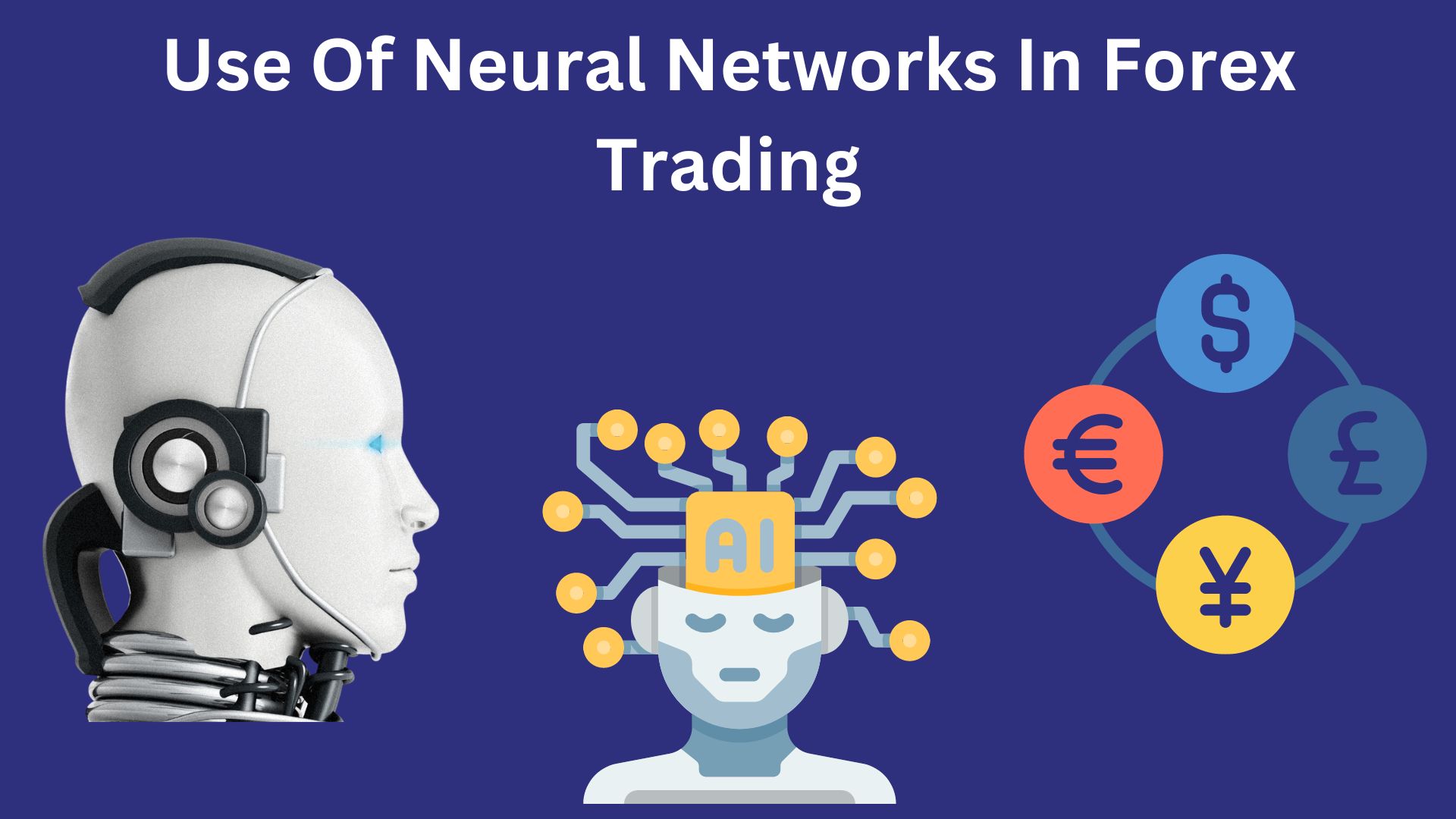Trading foreign currencies, or forex, is a common investment activity that entails buying and selling other currencies in order to make a profit. The use of neural networks in currency trading has grown in prominence in recent years as a technique for predicting financial markets, including the forex market.
A neural network is a sort of machine learning system that is designed to recognize patterns and forecast them. It is made up of layers of interconnected “neurons” that process and transfer data. Because neural networks can learn and change over time, they are well suited to jobs requiring the examination of large and complicated datasets.
Is it, nevertheless, a good idea to employ neural networks in FX trading? On the one hand, neural networks have the ability to deliver significant insights and increase trade prediction accuracy. On the other hand, there are issues with neural network dependability and robustness, as well as the potential of overfitting.
In this blog post, we will look at the benefits and drawbacks of employing neural networks in forex trading, as well as some of the obstacles and considerations that come with using this technology. We will also look at some examples of how neural networks have been employed in the FX market and weigh the advantages and disadvantages of this technique.
Pros Of Using Neural Networks In Forex Trading
- Improved accuracy: Neural networks can learn and adapt over time, potentially improving trade forecast accuracy. Neural networks can uncover patterns and links in huge and complicated information that people may find difficult to interpret.
- Enhanced risk management: By recognizing possible risk variables and giving real-time alerts, neural networks can assist traders in better assessing and managing risk. This is especially important in the volatile and fast-paced FX market.
- Automated decision-making: Neural networks can automate decision-making, allowing traders to execute transactions more quickly and consistently. This is especially important when immediate action is necessary, such as during high-volatility market events.
- Increased efficiency: By automating certain operations, neural networks have the potential to improve trading efficiency and allow traders to focus on other important tasks.
- Improved results: Neural networks have the potential to improve trading results by assisting traders in making better informed and precise decisions. It is crucial to realize, however, that no investment strategy is guaranteed to be successful, and that all investments involve some level of risk.
Cons Of Using Neural Networks In Forex Trading
- Complexity: Complex neural networks require particular knowledge and abilities to implement and maintain. For traders who are unfamiliar with machine learning and data science methodologies, this can be a barrier to entry.
- Reliability and robustness: Because neural networks are sensitive to changes in data, they may not always perform consistently. This can be an issue in the fast-paced and dynamic currency market, where conditions can shift suddenly.
- Overfitting: Overfitting is a risk with neural networks, which means they may perform well on training data but badly on fresh or unknown data. This can be problematic in the FX market since conditions can shift quickly and forecasting future pricing is difficult.
- Lack of transparency: Because neural networks can be difficult to analyze and comprehend, traders may struggle to understand how and why certain trade advice was generated. Some traders may be concerned about the lack of transparency.
- High cost: Implementing and maintaining a neural network can be costly due to the specialized software and hardware required, as well as qualified employees to build and operate it. Smaller merchants or those with low resources may not be able to do so.
Challenges Of Implementing Neural Networks In Fx
- Data availability and quality: To be trained and tested, neural networks require a vast volume of high-quality data. Obtaining and compiling sufficient data in the forex market can be difficult, as it may require gathering data from many sources and ensuring that it is reliable and relevant.
- Model design and optimization: Designing and optimizing a neural network for forex trading can be a difficult and time-consuming process because it requires selecting suitable architecture, hyperparameters, and training techniques.
- Integration with existing systems: Neural networks may need to be integrated with existing trading systems and processes, which can be difficult if the systems are incompatible or if existing strategies contradict.
- Regulation: The application of neural networks in financial markets is subject to regulatory monitoring, which varies depending on the jurisdiction. Traders who use neural networks may be subject to rules and regulations like reporting obligations and risk management standards.
- Ethical considerations: The use of neural networks in financial markets presents ethical concerns, such as the potential for biased decision-making and the influence on employment. Traders who use neural networks may need to evaluate and address these difficulties.
Frequently Asked Questions About Implementing Neural Networks In Forex Trading
A neural network is a sort of machine learning system that is designed to recognize patterns and forecast them. It is made up of layers of interconnected “neurons” that process and transfer data.
Large datasets are used to train neural networks, where the input data is sent through the network and the output is compared to the desired result. The network’s internal parameters are adjusted to minimize the difference between expected and desired outputs. The network can learn and adapt to new data over time, allowing it to generate more accurate predictions.
In the forex market, neural networks have been employed in a variety of ways, including predicting exchange rates, recognizing trends and patterns, and automating trade choices.
Some traders have utilized neural networks to evaluate massive datasets of historical price data in order to uncover patterns that can be used to predict trades. Others have employed neural networks to automate trade decision-making, allowing them to execute deals more quickly and consistently.
Using neural networks in forex trading has the potential to improve accuracy, risk management, automated decision-making, efficiency, and results. Neural networks have the capacity to uncover patterns and links in huge and complicated datasets that humans may find difficult to discern, resulting in more accurate trading predictions.
By recognizing potential risk factors and giving real-time notifications, they can also assist traders in better assessing and managing risk. By automating certain operations, neural networks can improve trading productivity and allow traders to focus on other important tasks. Although no investment strategy is guaranteed to be successful, and all investments entail some level of risk, using neural networks has the potential to increase trading performance.
There are various possible disadvantages of utilizing neural networks in forex trading, including complexity, reliability, resilience, overfitting, lack of transparency, and high cost.
Neural networks can be difficult and require specialized knowledge and skills to develop and maintain, making them an impediment to entry for traders unfamiliar with machine learning and data science approaches. Neural networks are also susceptible to changes in data and may not always perform consistently, which can be problematic in the fast-paced and dynamic forex market.
They may also be prone to overfitting, which means they may perform well on training data but poorly on new or previously unseen data. Because neural networks can be difficult to analyze and comprehend, traders may struggle to understand how and why certain trade advice was generated. Finally, building and maintaining a neural network can be costly due to the specific software and hardware required, as well as the need for qualified employees to create and operate it.
Traders who want to use neural networks in their trading techniques should take the following steps:
Collect and prepare high-quality data: This may entail gathering information from many sources and cleaning and pre-processing it to ensure accuracy and relevance.
Design and optimize the neural network model: This entails selecting the proper architecture, hyperparameters, and training methods to guarantee that the model can effectively learn from data and generate correct predictions.
Train and test the model: To guarantee that the model can generalize well and make accurate predictions, it should be trained using prepared data and evaluated on unseen data.
Integrate the model into the trading process: Integrate the model with existing trading platforms.
Conclusion
Finally, the use of neural networks in forex trading has the potential to deliver significant insights and increase trade forecast accuracy. However, it is critical to carefully weigh the advantages and disadvantages, as well as the obstacles and considerations involved in using this technology. Neural networks can be complex and time-consuming to design and maintain, and they may not always perform consistently. They may also be susceptible to overfitting and a lack of transparency. Furthermore, developing and maintaining a neural network can be costly.
Traders considering adopting neural networks in their trading methods should carefully evaluate the approach’s applicability to their specific demands and aims. Combining neural networks with other trading methods or tools may be beneficial, as well as carefully considering any regulatory and ethical considerations that may arise. Finally, whether or not to utilize neural networks in forex trading will be determined by a number of aspects, such as the trader’s resources, expertise, and risk tolerance.




[…] recent years, the use of automated trading systems, also known as algorithmic trading or black box trading, has grown in popularity in the financial […]